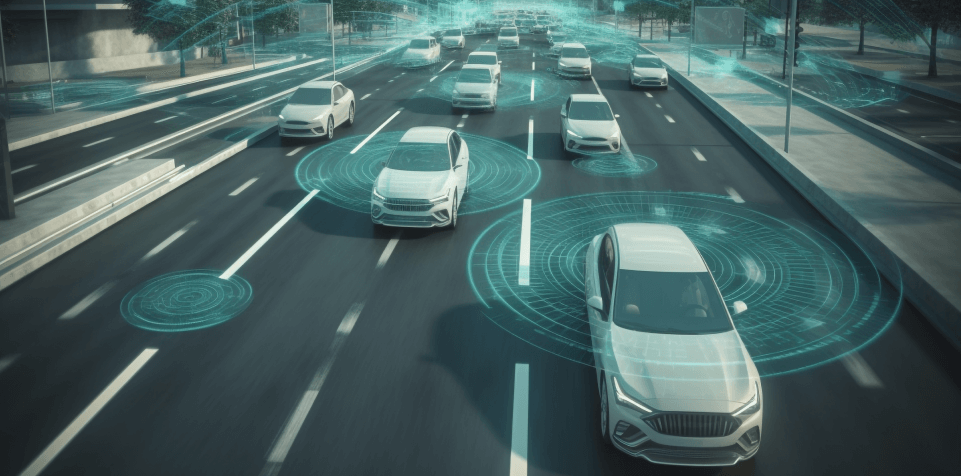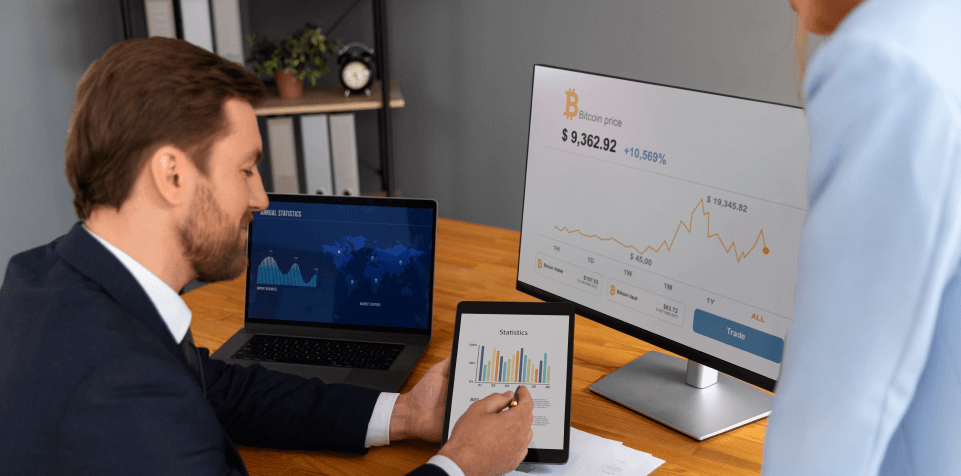100+ Use Cases of MIA

Imagine a world where artificial intelligence not only analyzes data but also creates entirely new content, insights, and solutions. MIA – My Intelligent Assistant leverages the latest advancements in generative AI to transform industries by automating tasks, personalizing customer interactions, and optimizing workflows. In this document, we showcase over 100 innovative use cases and examples demonstrating how generative AI—when powered by MIA—can revolutionize everything from customer service to complex data analysis.
Traditional AI typically focuses on learning from data and making predictions. In contrast, generative AI goes a step further by autonomously creating new text, images, and even strategies, opening a new frontier of automation and creative problem-solving. Explore how MIA integrates these capabilities to drive efficiency and innovation across sectors.
MIA as Chat Agents
Automative
Virtual Troubleshooting Guide for Service Technicians
AI capabilities can provide real-time diagnostic assistance to service technicians. By analyzing vehicle data and repair manuals, MIA chatbots can offer interactive, step-by-step solutions for troubleshooting complex issues, thereby improving efficiency and reducing downtime in service centers.
Example: MIA can guide technicians through diagnostic procedures and can help them identify and resolve mechanical problems more efficiently.
Dealer Support Chatbot
AI can act as a virtual assistant for automotive dealers, offering instant support for various queries and operational tasks. From inventory checks to facilitating warranty claims, the chatbot streamlines dealer operations, enabling faster decision-making and improved customer service.
Example: A Dealer Support Chatbot can help provide dealers with real-time access to inventory status, order tracking, and customer service assistance, enhancing overall dealership efficiency and customer satisfaction.
AI-Powered Product Manual Assistance for Mechanics
AI-driven chatbots equipped with generative AI capabilities can quickly reference product manuals and provide mechanics with instant information on assembly procedures, part specifications, and safety protocols. This improves the speed and accuracy of repairs and maintenance tasks on the shop floor.
Example: Product Manual Chatbot assists mechanics by instantly retrieving relevant information from product manuals, ensuring adherence to manufacturer specifications during repairs and maintenance.
Car Buying Guide Chatbot
Designed to simplify the car purchasing journey, this chatbot assists potential buyers by providing detailed information on different car models, including feature comparisons, pricing, and financing options. It also facilitates test drive bookings, streamlining the car buying process and enhancing customer Experience.
Example: An AI-powered Car Buying Guide Chatbot offers personalized recommendations based on user preferences and budget, guiding them through the entire car buying process from research to purchase, thereby improving customer satisfaction and dealership sales.
Real Estate

Personalized Home-buying Experience
MIA chatbots in real estate offer personalized support and assistance 24/7 to homebuyers
Example: A chatbot can interact with buyers, understand their preferences, respond to inquiries about property listings, schedule viewings, and provide information on neighborhoods.
24/7 Customer Service

MIA-powered chatbots in real estate provide round-the-clock customer Service.
Example: If a prospective homebuyer has inquiries about property listings or wants to schedule a viewing, they can chat with a chatbot at any time. The chatbot can answer FAQs, schedule appointments, and even connect users with live agents for more complex inquiries, ensuring seamless assistance day or night.
HR
24/7 Employee Support

AI-generated content in HR with MIA provides 24/7 employee support by offering instant assistance and guidance.
Example: Building an AI chatbot that can help employees chat anytime, anywhere to get answers to HR-related questions or resolve issues like password resets.
Procurement
Guided Product and Service Sourcing
MIA chatbots guide users through product and service sourcing processes based on pre-defined parameters and company policies.
Example: A procurement specialist needs to source new office supplies. Instead of manually searching through catalogs and contacting vendors, they can interact with a chatbot that asks questions about their specific needs, suggests potential suppliers based on budget and quality requirements, and even initiates basic price comparisons with pre-approved vendors.
Proactive Inventory Management and Reordering

MIA chatbots analyze historical data and predict inventory needs, automating tasks like generating purchase orders for essential items before stock levels reach critical thresholds.
Example: As inventory levels for office paper approach the reorder point, the MIA chatbot automatically initiates a purchase order for a predetermined quantity based on historical usage patterns. This proactive approach helps maintain consistent inventory levels and prevents stockouts, ensuring smooth Operations.
Energy
Personalized Customer Service
MIA chatbots provide 24/7 personalized customer service, answering frequently asked questions, resolving billing issues, and scheduling appointments, reducing workload for human agents.
Example: If a customer has a question about their electricity bill. They can chat with a MIA chatbot on the energy company’s website or mobile app. The chatbot can access their account information, explain bill details, and handle simple inquiries like payment options or meter readings. This frees up human agents to focus on complex issues requiring more specialized expertise.
Proactive Customer Engagement and Education
MIA chatbots proactively engage customers with energy-saving tips, outage updates, and personalized recommendations based on their usage patterns, promoting informed decision-making.
Example: During a heatwave, a MIA chatbot sends a message to a customer suggesting ways to conserve energy, like adjusting thermostat settings or using energy-efficient appliances. This proactive approach can help customers manage energy costs and reduce overall consumption.
Insurance

Proactive Customer Service
MIA chatbots can anticipate customer needs, answer frequently asked questions, and offer personalized recommendations based on their policy details and past interactions.
Example: A customer receives a notification from their car insurance chatbot reminding them of an upcoming renewal and offering options to compare quotes and adjust coverage if needed. The chatbot can also answer questions and guide them through the renewal process.
Personalized Policy Management

MIA chatbots provide 24/7 support to policyholders, allowing them to manage their policies, access documents, and update information anytime.
Example: A customer wants to check their policy coverage details before going on a trip. They can chat with an AI-powered chatbot that retrieves their policy information, answers questions about coverage inclusions and exclusions, and even connects them to a live agent if needed.
RETAIL
24/7 Customer Support
MIA chatbots answer frequently asked questions, handle basic inquiries, and resolve simple customer issues, offering 24/7 support and reducing the workload on human agents.
Example: A customer has a question about product availability. The chatbot checks inventory levels and provides an immediate answer, saving the customer time and frustration. If the inquiry is complex, the chatbot can seamlessly transfer the customer to a human agent for further assistance.
Personalized Product Recommendations

MIA chatbots analyze past purchases, browsing history, and user preferences to recommend relevant products and deals, improving customer satisfaction and conversion rates.
Example: A customer browsing an online clothing store interacts with a chatbot. The AI analyzes their previous purchases and browsing behavior, suggesting similar styles, complementary items, and ongoing promotions relevant to their taste.
Finance

Customized Financial Advice & Investment Management
MIA chatbots offer basic financial advice tailored to individual needs and risk tolerance. They can also connect users with human financial advisors for more complex investment planning and wealth management strategies.
Example: A customer asks a chatbot about saving for retirement. The chatbot analyzes their financial situation and suggests potential investment options based on their risk tolerance and time horizon. It can even schedule a consultation with a human advisor for personalized guidance.
Banking

Personalized Customer Service
MIA chatbots provide 24/7 personalized assistance to customers, answering basic questions about accounts, transactions, and banking services.
Example: A customer wants to check their account balance but can’t access their online banking. They can chat with a MIA chatbot that securely retrieves and displays their balance, eliminating the need to wait for phone Support.
Healthcare

Appointment Scheduling & Reminders
MIA chatbots can efficiently schedule appointments, send reminders, and confirm attendance, reducing administrative burden for healthcare providers.
Example: If a patient needs to reschedule their appointment with the doctor without the hassle of waiting on phone calls, they can instantly use a chatbot to reschedule or cancel appointments with their doctor or specialist.
Symptom Checking & Triage
MIA chatbots can conduct preliminary symptom checks, answer basic healthcare questions, and direct patients to appropriate resources.
Example: A patient experiences sudden chest pain and uses a MIA chatbot for assistance. The chatbot conducts a preliminary symptom check, asks relevant questions about the pain’s severity and accompanying symptoms, and swiftly examines the patient, advising immediate medical attention if necessary or providing guidance for self-care if the symptoms are Mild.
Design
Personalized Design Feedback & Inspiration

MIA chatbots offer personalized feedback on design concepts, suggest improvements based on user preferences, and provide inspiration from relevant trends and styles.
Example: A designer uploads a logo draft to a MIA chatbot. The chatbot analyzes the design and offers feedback on things like color schemes, typography, and alignment. It can also suggest similar successful logos or trending design elements for inspiration.
Collaborative Design Exploration & Brainstorming
MIA chatbots can act as brainstorming partners, generating design ideas based on user input, suggesting variations, and offering different design perspectives to spark creativity.
Example: A web designer discusses their website concept with a MIA chatbot. The chatbot will ask questions about the target audience, desired functionalities, and brand guidelines. It will then generate various layout options, color combinations, and UI elements to explore, helping the designer refine their vision.
Legal
Legal Document Review & Analysis

MIA chatbots review and analyze legal documents, highlighting potential issues, inconsistencies, and areas requiring further review by a human lawyer.
Example: A chatbot can analyze contracts, leases, or other legal documents, identifying clauses requiring special attention, highlighting potential risks, and flagging inconsistencies for further review by a lawyer.
24/7 Legal Information & Assistance
MIA chatbots provide basic legal information, answer frequently asked questions (FAQs), and direct users to relevant resources, even outside of business hours.
Example: A chatbot can answer questions about common legal topics like wills, contracts, or tenant rights. It can also direct users to legal forms, and self-help guides, or connect them with a human representative during business hours.
MIA Contextual Search Agents
Procurement
Intelligent Search & Recommendation
MIA analyzes past purchases and supplier data to personalize search results and proactively recommend relevant suppliers and products, improving efficiency and reducing procurement time.
Example: A procurement officer searching for office supplies is presented with a list of pre-approved vendors with competitive prices based on their historical purchases and current market trends. MIA can also highlight new, sustainable options or suggest alternative products based on user preferences and past performance.
Real-Time Market Intelligence & Price Tracking

MIA monitors market trends, competitor pricing, and supplier behavior in real-time, providing insights to inform procurement decisions and negotiations.
Example: By analyzing historical data and current market trends, MIA can predict potential price fluctuations for specific commodities or materials, allowing procurement teams to make informed decisions about purchasing strategies and negotiate better pricing with suppliers.
Energy
Personalized Search and Recommendations
MIA personalizes search results for energy professionals by learning their interests, past searches, and industry trends, delivering relevant and timely Information.
Example: An energy researcher frequently searches for information on renewable energy sources. MIA can recognize this pattern and suggests relevant research papers, industry news, and upcoming conferences focused on renewable energy advancements.
Advanced Semantic Search and Knowledge Management

AI understands the nuances of energy-specific terminology and utilizes advanced semantic search to improve the accuracy and efficiency of information retrieval across vast datasets.
Example: MIA, with its knowledge of energy terminology, can understand the intended meaning and return relevant information about optimizing smart grid systems.
Insurance
Smart FAQ Generation and Management

MIA automatically identifies frequently asked questions (FAQs) from customer inquiries and online interactions, then generates and maintains an up-to-date and comprehensive FAQ section on the company website and app.
Example: As users ask questions about claim filing procedures, MIA can identify repetitive queries and automatically generate responses to populate the FAQ section, reducing the need for manual updates and providing instant answers to common questions.
AI-powered Search Term Optimization
MIA analyzes search engine trends, user queries, and competitor strategies to identify relevant keywords and optimize content, improving the discoverability of insurance products through organic search.
Example: Analyzing user searches related to “life insurance,” an AI can identify emerging trends like “term life vs. whole life” and suggest optimizing web page content for these keywords to attract more relevant traffic.
Retail & ECommerce

Semantic Search & Natural Language Processing
MIA goes beyond keyword matching to understand the intent and meaning behind customer searches, enabling them to find relevant products even if they don’t use the exact keyword.
Example: A customer searching for “comfy sneakers for work” might be directed to a broader category of comfortable work shoes, even though they didn’t specifically use the keyword “work shoes.”
Search Trend Analysis & Optimization
MIA analyzes search trends and customer behavior to identify popular products, emerging searches, and potential issues with search functionality, enabling retailers to optimize their search engine and product offerings.
Example: By analyzing search trends, retailers can identify trending keywords and adjust their product descriptions and category structures to improve the findability of relevant products based on customer demand.
Banking & Finance

Proactive & Contextual Search Suggestions
MIA anticipates user needs and proactively offers relevant search suggestions based on previous searches, current activities, and real-time data like market trends.
Example: While reviewing account statements, a customer might see suggestions for budgeting tools or investment opportunities based on recent spending patterns and current market conditions.
Intelligent Knowledge Base Search
MIA utilizes natural language processing (NLP) to understand user intent and context, providing relevant information from extensive knowledge bases even if keywords are not explicitly used.
Example: A customer searching “how to manage student loan debt” might be directed towards an AI-powered guide that summarizes repayment strategies, consolidation options, and government support programs, even though the exact keywords weren’t used.
Healthcare
Personalized Literature Search & Knowledge Retrieval
MIA can personalize search results for researchers and clinicians by analyzing their past searches, research interests, and patient data to deliver relevant and up-to-date information.
Example: A doctor researching a specific disease can utilize an AI-powered search platform that tailors results based on their past searches about treatment options, patient demographics, and recent clinical trials. This personalized approach saves valuable time and ensures the doctor encounters the most relevant information for their specific needs.
AI-Powered Medical Image Analysis & Diagnosis Support

MIA analyzes medical images like X-rays, CT scans, and MRIs to identify potential abnormalities, assist in diagnosis, and support healthcare professionals in making informed clinical decisions.
Example: AI algorithms can analyze medical images and highlight areas of concern, such as suspicious lesions or tumors. While not a replacement for expert diagnosis, this technology can help radiologists and other healthcare professionals identify potential issues and prioritize further investigation.
Design
Personalized Design Inspiration Search
MIA personalizes design searches based on user preferences, past searches, and style choices, identifying relevant content that aligns with their specific design aesthetic.
Example: A designer searching for “furniture layouts” can be presented with results tailored to their previously saved inspiration boards, which might favor minimalist Scandinavian styles. This eliminates irrelevant results and saves time spent filtering through broad search queries.
Visual Search & Similarity Detection
MIA allows designers to upload images or sketches and find similar designs, materials, or color palettes across various online resources.
Example: A designer struggling to find a specific fabric pattern can upload a picture of a similar pattern and receive suggestions for similar or complementary fabrics, saving them valuable research time.
Legal
Enhanced Legal Research

MIA assists lawyers in legal research by understanding their search intent, analyzing vast amounts of legal data, and surfacing relevant case law, statutes, and legal opinions.
Example: A lawyer researching a patent infringement case can utilize an AI- powered legal research tool. They can enter keywords and specific details, and the AI can analyze legal databases, identify relevant case precedents, and present summaries or excerpts highlighting key points.
Predictive Search & Case Recommendations
MIA analyzes past legal work, similar cases, and client needs to predict relevant case law and legal resources lawyers might need during specific situations.
Example: When preparing for a contract negotiation, a lawyer can utilize an AI tool that analyzes their past successful contracts and relevant legal precedents. Based on these factors, the AI can recommend similar cases, legal clauses, and potential negotiation strategies, aiding in informed decision- Making.
MIA Data Analysis Agents
Automotive
Predictive Search & Case Recommendations
MIA analyzes past legal work, similar cases, and client needs to predict relevant case law and legal resources lawyers might need during specific situations.
Example: When preparing for a contract negotiation, a lawyer can utilize an AI tool that analyzes their past successful contracts and relevant legal precedents. Based on these factors, the AI can recommend similar cases, legal clauses, and potential negotiation strategies, aiding in informed decision- Making.
Personalized In-Car Entertainment and Assistance
Generative AI can deliver personalized entertainment options and assistance to passengers based on their preferences and contextual cues.
Example: An automotive infotainment system powered by Generative AI tailors content recommendations and assistance based on passengers’ past interactions and current context. For instance, the system suggests music playlists, audiobooks, or podcasts based on passengers’ listening history and current mood.
Driver Monitoring

AI algorithms can monitor driver behavior, detecting signs of fatigue or distraction and providing alerts or interventions to prevent accidents.
Example: AI can help analyze driver data and adjust vehicle settings based on the driver’s condition, ensuring a safe and comfortable driving experience.
Dealer Performance Analysis
Analyzes sales, customer feedback, and operations to enhance dealer efficiency and drive targeted business growth strategies.
Example: By feeding sales data, customer feedback from surveys and reviews, as well as operational metrics such as inventory turnover rates and employee productivity, into the AI system, a manufacturer can gain actionable insights. These reveal which dealerships are excelling in sales and customer satisfaction, pinpoint areas of improvement, and provide recommendations for optimizing operations and driving targeted business growth strategies.
Real Estate
Dealer Performance Analysis

Analyzes sales, customer feedback, and operations to enhance dealer efficiency and drive targeted business growth strategies.
Example: By feeding sales data, customer feedback from surveys and reviews, as well as operational metrics such as inventory turnover rates and employee productivity, into the AI system, a manufacturer can gain actionable insights. These reveal which dealerships are excelling in sales and customer satisfaction, pinpoint areas of improvement, and provide recommendations for optimizing operations and driving targeted business growth strategies.
AI-Powered Property Analysis
MIA processes vast datasets to conduct thorough property analysis. It considers factors such as location, amenities, and market trends to provide accurate valuations and investment insights.
Example: Utilizing AI to analyze historical data can help identify lucrative investment opportunities in the real estate market.
Efficient Transactions
MIA optimizes real estate transactions by automating processes like document verification and contract management.
Example: AI-driven data analytics can help in making informed decisions, while virtual assistants provide personalized customer support.
HR
Efficient Recruiting
MIA aids HR departments in talent acquisition by analyzing resumes and matching them with job descriptions, streamlining the recruitment process. Example: AI can help parse resumes and generate lists of ideal candidates, saving time and ensuring thorough candidate evaluation without human error.
Reviewing Employee Performances
MIA in HR can utilize data to track and analyze employee performance.
Example: An AI-powered system can assess completed tasks, project involvement, and peer feedback. During performance reviews, managers receive comprehensive reports, highlighting strengths, areas for improvement, and overall progress, ensuring objective and fair evaluations.
Workforce Planning Solutions

MIA can also help an HR executive analyze workforce data and predict future hiring needs based on current skills, industry trends, and company growth plans.
Example: By forecasting roles needed for the next year, executives can strategically plan hiring to ensure the company maintains the right talent.
HR Schedule Optimization
AI can optimize worker schedules in HR by analyzing operational data and scheduling constraints.
Example: It can automate intraday management, reducing administrative burden and ensuring optimal staffing levels aligned with production volumes or foot traffic, enhancing business performance and minimizing labor costs.
Procurement
Automated Supplier Risk Management
MIA analyzes data from various sources like financial reports, news articles, and social media to identify potential risks associated with suppliers, enabling proactive mitigation strategies.
Example: An AI system can analyze supplier data, monitor news feeds for relevant events, and identify potential financial instability, legal issues, or reputational risks associated with a supplier. This can help procurement teams make informed decisions and avoid potential disruptions in the supply chain.
Enhanced Contract Analysis and Negotiation
MIA analyzes past contracts, market trends, and supplier data to identify negotiation opportunities, optimize contract terms, and ensure compliance with regulations.
Example: An AI tool can analyze past contract data and identify areas where better terms were secured. It can also analyze market data on pricing and industry standards to suggest negotiation strategies and ensure compliance with relevant procurement regulations.
Energy
Fraud Detection & Cybersecurity Enhancement

MIA can analyze energy consumption data and help identify anomalies to detect potential fraud attempts, theft, or meter tampering, improving security and reducing energy losses.
Example: By analyzing individual consumption patterns and comparing them to historical data and weather conditions, MIA can identify unusual spikes or sudden drop-offs in energy usage, potentially indicating unauthorized activity or meter manipulation.
Impact Assessment & Sustainability Initiatives
MIA analyzes environmental data and energy consumption data to assess the environmental impact of different energy sources and optimize sustainability initiatives, promoting cleaner and more sustainable energy Production.
Example: By analyzing data from various sources, MIA can compare the carbon footprint of different energy generation methods and identify areas for improvement. This information can be used to optimize energy production processes and select the most sustainable energy sources, minimizing environmental impact.
Insurance
Enhanced Risk Assessment & Underwriting
MIA analyzes vast amounts of data from various sources, including customer demographics, claims history, and external data sets, to provide a more accurate and nuanced risk assessment for insurance products.
Example: By analyzing driving patterns, weather data, and vehicle maintenance records, AI can predict the likelihood of accidents for auto insurance applicants, leading to more accurate risk assessment and personalized premium quotes.
Personalized Policy Recommendations & Upselling

MIA analyzes customer data and past interactions to recommend tailored insurance products and identify upselling opportunities that meet individual needs.
Example: Based on a customer’s home size, location, and security features, AI can recommend additional coverage options like water damage or theft protection, leading to increased customer satisfaction and potential revenue Growth.
Retail
Personalized Pricing & Dynamic Promotions

MIA analyzes real-time market data, competitor pricing, and customer behavior to personalize pricing and offers targeted promotions, maximizing profitability and customer satisfaction.
Example: An online travel agency can use AI to adjust hotel prices based on real-time demand, competitor offerings, and individual customer preferences. This allows them to offer competitive pricing while maximizing profit margins, while also delivering personalized deals that cater to specific customer budgets and travel needs.
Predictive Demand Forecasting & Inventory Optimization
MIA analyzes historical sales data, market trends, and external factors to predict future demand for specific products, optimize inventory levels, and avoid stock outs or overstocking.
Example: An AI system can analyze weather forecasts, social media trends, and historical sales data to predict a surge in demand for sunglasses before summer. This allows retailers to pre-order the appropriate amount of stock, preventing lost sales due to stockouts and avoiding unnecessary storage costs associated with overstocking.
Banking & Finance
Personalized Financial Product Recommendations

MIA can help analyze customer data, financial goals, and market trends to recommend personalized financial products and services, such as investment portfolios, insurance plans, and credit options.
Example: By analyzing a customer’s financial history, income, and risk tolerance, an AI-powered recommendation engine can suggest suitable investment options, insurance plans, and personalized savings goals aligned with their financial profile.
Data-driven Market Analysis & Forecasting
MIA can analyze historical financial data, market trends, and economic indicators to predict future market movements and inform investment decisions.
Example: Be it vast amounts of financial data or market trends, AI algorithms can analyze them. This helps in identifying patterns and predicting potential market fluctuations. With the help of AI, banks and financial institutions can make data-driven investment decisions and manage their portfolios more Effectively.
Healthcare
Text Analysis & Information Extraction
MIA analyzes large volumes of scientific literature, medical records, and clinical notes to extract relevant information, identify trends, and generate insights to support research and clinical decision-making.
Example: An AI tool can analyze thousands of research papers to identify potential drug repurposing opportunities, where existing drugs can be used to treat new diseases, accelerating research and potentially leading to new treatment options.
Personalized Health Management & Patient Engagement

MIA utilizes patient data and health trackers to personalize recommendations for medication adherence, healthy lifestyle choices, and preventive care measures, promoting patient engagement and improving overall health outcomes.
Example: An AI-powered app can analyze a patient’s sleep patterns, activity levels, and medication intake to provide personalized recommendations for improving health habits and managing chronic conditions, empowering patients to take a more active role in their health.
Design
Design Trend Forecasting
MIA analyzes vast amounts of data from social media, fashion shows, and consumer research to predict upcoming design trends and inform design Decisions.
Example: An AI tool can analyze social media posts and fashion runways to identify emerging color palettes, patterns, and design styles. It can then provide designers with insights and recommendations to stay ahead of the Curve.
Data-Driven Color Palette Generation

MIA analyzes various data sources, including brand guidelines, target audience preferences, and competitor color schemes, to generate data-driven and brand-aligned color palettes for designers.
Example: An AI tool can consider a brand’s logo, target audience demographics, and competitor color palettes to suggest a range of complementary and brand-consistent color combinations for various design projects.
Legal
Predictive Analytics & Case Law Research

MIA analyzes historical legal data and case law to predict potential case outcomes, identify relevant precedents, and suggest research directions for lawyers.
Example: A lawyer preparing for a patent infringement case can use MIA to analyze past rulings on similar cases, identify factors influencing successful arguments, and predict the potential range of outcomes based on historical trends.
Data Privacy & Compliance Management
MIA assists with data privacy and compliance by identifying and classifying personal data within legal documents and systems, helping organizations comply with regulations like GDPR and CCPA.
Example: A law firm can use MIA to scan internal documents and identify instances of personal data, such as names and social security numbers, ensuring compliance with data protection regulations and minimizing the risk of data breaches.
MIA as an Automation Agents
Automotive
Design Optimization
AI facilitates the design optimization process by generating and evaluating multiple design iterations to improve vehicle performance and efficiency.
Example: Applying AI techniques like few-shot prompting to explore various design alternatives for aerodynamics and energy efficiency, accelerating the development of next-generation vehicle models.
Supply Chain Management

AI streamlines logistics and supply chain operations by predicting demand, optimizing inventory, and improving delivery schedules.
Example: AI can help to monitor and adjust supply chain routes in real-time based on changing market conditions and production requirements.
Predictive Maintenance
AI predicts equipment failures and maintenance needs, minimizing downtime and reducing maintenance costs.
Example: Employing zero-shot prompting to analyze vehicle sensor data and predict potential mechanical issues before they occur, enabling proactive maintenance scheduling.
Autonomous Vehicles
AI enables self-driving capabilities in vehicles, reducing human intervention and enhancing safety on the roads.
Example: Applying chain of thought prompting to guide autonomous vehicles through complex traffic scenarios, allowing them to make informed decisions based on a logical reasoning process.
Real Estate
Property Valuation and Pricing
MIA in real estate excels in property valuation and pricing by analyzing extensive data to generate accurate and unbiased valuations.
Example: An AI system can efficiently process MLS listings, public records, and neighborhood demographics to estimate a property’s market value. This automation saves realtors valuable time and resources, offering more efficient and reliable valuation methods compared to traditional approaches.
Lead Nurturing & Conversion
AI-generated content in real estate with MIA can revolutionize lead nurturing and conversion by personalizing communication with potential buyers and tenants.
Example: Using natural language processing, AI can understand individual preferences and automatically send targeted emails, answer questions, and schedule appointments.
Document Generation & Review
AI-generated content in real estate automates the creation and review of standard documents, enhancing efficiency and accuracy.
Example: MIA can automatically generate offer letters, contracts, and leases using predefined templates and transaction details. It also identifies potential errors and suggests edits, ensuring documents are error-free and compliant with regulations.
Property Maintenance & Repairs

MIA content in real estate excels in property maintenance and repairs. By analyzing sensor data, it predicts maintenance issues before they occur, minimizing downtime and costs.
Example: AI monitors building systems, detects problems like leaky pipes, and schedules repairs, ensuring tenant comfort and preventing costly Breakdowns.
Procurement
Automated Invoice Processing & Data Extraction

MIA extracts data from invoices, purchase orders, and contracts with high accuracy, reducing manual effort and improving data quality for better spend analysis and budgeting.
Example: An AI-powered platform can automatically capture data like vendor names, invoice amounts, line items, and due dates from various document formats. This eliminates manual data entry errors and saves procurement teams significant time and resources.
Automated PO Generation & Approval Workflow
MIA streamlines purchase order (PO) generation and approval workflows by automating data entry, routing approvals, and notifying relevant stakeholders, ensuring a quicker and more efficient procurement process.
Example: Based on predefined rules and approval matrices, AI can automatically generate POs based on approved requisitions, route them to relevant approvers, and send notifications for timely approvals. This reduces manual tasks, minimizes delays, and improves overall process efficiency.
Energy
Predictive Maintenance & Asset Optimization

MIA analyzes sensor data from wind turbines, solar panels, and other energy infrastructure to predict potential equipment failures and optimize maintenance schedules, reducing downtime and costs.
Example: By analyzing historical data and real-time sensor readings, MIA can identify patterns and predict when a specific wind turbine component is likely to fail. This allows for proactive maintenance, preventing costly downtime and ensuring optimal energy production.
Renewable Energy Integration & Resource Management
MIA optimizes the integration of renewable energy sources like solar and wind power into the grid by forecasting variable weather patterns and optimizing energy storage systems, ensuring grid stability and maximizing renewable energy utilization.
Example: MIA can analyze historical and real-time data from wind and solar farms to predict fluctuations in energy generation based on weather patterns. This information can be used to optimize energy storage and transmission operations, ensuring grid stability even with variable renewable energy sources.
Insurance
Streamlined Claims Processing
MIA automates tasks like data extraction, document verification, and fraud detection, accelerating claims processing and improving efficiency.
Example: An AI system can analyze accident reports, medical records, and photos submitted with a claim. It can extract relevant details, verify authenticity, and flag potential inconsistencies for further investigation, ultimately speeding up the claims process and reducing manual workload for adjusters.
Fraud Detection and Prevention

MIA analyzes claim data and identifies patterns or anomalies that might indicate fraudulent activity, mitigating financial losses for insurers.
Example: An AI system can analyze claim patterns, compare data across different sources, and flag suspicious claims for human review. This can help insurers prevent fraudulent claims early on and protect their resources.
Retail
Personalized Product Recommendations & Upselling

MIA analyzes customer purchase history, browsing behavior, and demographic data to recommend relevant products, leading to increased customer satisfaction and sales.
Example: While browsing for a new laptop, a customer receives personalized recommendations for accessories like a case, mouse, or external hard drive based on their chosen laptop model and previous purchases. This personalized approach can increase the chance of upselling and cross-selling products.
Image/Video Recognition for Product Recommendation
MIA utilizes image and video recognition technology to enable visual search functionalities and personalized product recommendations based on uploaded images or video recordings.
Example: A customer can upload a picture of a desired product to a retailer’s app, and the AI system can identify similar products or recommend complementary items based on visual features and associated data.
Banking & Finance
Automated Back-Office Processes

MIA automates repetitive tasks like data entry, document processing, and form verification, freeing up employee time for more strategic tasks and improving operational efficiency.
Example: MIA can extract information from loan applications, verify documents, and upload data into the system, automating manual processes currently handled by back-office staff. This allows them to focus on more complex tasks like reviewing loan applications and providing customer Support.
Regulatory Compliance Automation
MIA automates tasks related to regulatory compliance by analyzing regulations, identifying potential compliance risks, and generating reports, ensuring adherence to financial regulations and mitigating risk exposure.
Example: MIA can monitor financial transactions for potential breaches of anti-money laundering and know-your-customer (KYC) regulations. It can also generate reports to help banks comply with complex regulatory requirements and maintain transparency.
Healthcare
Automated Patient Data Analysis

MIA analyzes large datasets of patient medical records, images, and genomic data to identify trends, predict potential health risks, and personalize treatment plans.
Example: AI systems can analyze a patient’s medical history, lab results, and genetic data to identify potential risk factors for developing certain diseases, allowing for early intervention and preventive measures.
Automated Administrative Tasks
MIA automates routine administrative tasks like appointment scheduling, claims processing, and data entry, freeing up healthcare professionals to focus on patient care.
Example: AI chatbots can manage appointment scheduling, answer patient questions about billing and insurance, and even pre-screen patients for symptoms, allowing healthcare staff to spend more time with patients who need their expertise.
Design
Automating Repetitive Design Tasks
MIA automates mundane and repetitive tasks in the design process, such as image resizing, color correction, or background removal, freeing up designer time for more creative and strategic work.
Example: An AI can automatically resize images for different social media platforms, remove unwanted backgrounds from product photos, or apply consistent color corrections to entire photo sets. This eliminates tedious manual work and improves efficiency.
Automated Design System Maintenance

MIA automates the maintenance of design systems, ensuring consistency, reducing human error, and freeing up designers for more strategic work.
Example: An AI can automatically update design tokens (e.g., colors, fonts) across various design assets within a system when brand guidelines change. This reduces the risk of inconsistencies and ensures all components remain aligned with the updated guidelines.
Legal
Legal Research & Case Law Analysis

MIA assists with legal research by analyzing vast case law databases, identifying relevant precedents, and summarizing key legal arguments, accelerating the research process and improving efficiency.
Example: When researching a specific legal issue, MIA can search through countless court decisions and legal articles, extracting relevant case law, summarizing key arguments and rulings, and identifying potential legal precedents to support a case.
Legal Billing & Time Management
MIA automates legal billing processes by analyzing time spent on various tasks, generating invoices, and identifying potential billing errors, improving efficiency and reducing administrative burdens for legal teams.
Example: By tracking the time a lawyer spends on specific tasks like drafting a brief or attending court hearings, MIA can automatically generate accurate and detailed invoices, reducing manual work and potential errors in Billing.
Automate your processes with MIA
MIA supports AI automation by providing a super-abstracted low-code or no-code platform, enabling rapid development of custom generative applications. With minimal coding required, users can automate various tasks such as creating chatbots, answering questions, developing knowledge bases, analyzing data, processing voice inputs, and generating formulas.
This streamlines workflows, increases operational efficiency, and reduces the time and effort needed for manual intervention, ultimately empowering organizations to leverage MIA technology effectively for automation purposes.
